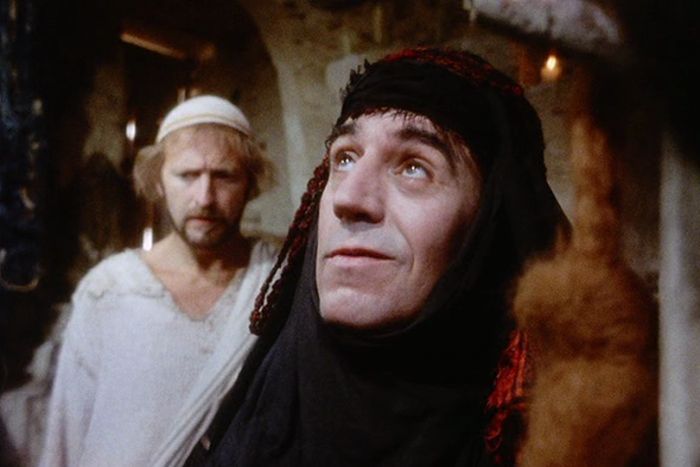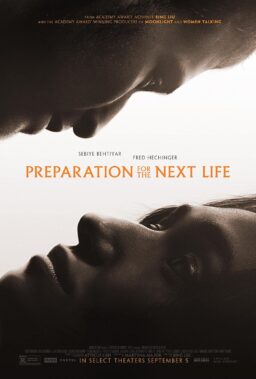There will not be a single obituary of Terry Jones, who passed away at his home in North London at the age of 77 after a long battle with dementia that had robbed him of his ability to speak, that does not begin by mentioning his work with the legendary comedy troupe Monty Python. This is not exactly a surprise—when you are part of a group that legitimately helped to change the face of comedy, first on television and then on the big screen, in ways that can still be felt today, you have to expect that your connection to them will serve as the lead. And yet, to look at him chiefly as a member of Python is to do him a bit of a disservice because his work with the group only comprised one part of a career that also saw him working as an author, filmmaker, actor, poet and historian. Here was a true Renaissance Man and while his passing, although not entirely unexpected, is still a major blow, he has left behind a far-reaching legacy of work that will continue to amuse and astonish people for generations to come.
He was born on February 1, 1942 in North Wales and when he was five, his family moved to the suburbs of London. He would attend Oxford University and while going after standard scholarly pursuits, he also joined the university’s Experimental Theater Club and developed an interest in writing and performing comedy. In 1963, he co-wrote and performed in his first revue, “Loitering With Intent,” alongside fellow student Michael Palin. The two would work together on subsequent revues and their efforts would be noticed by David Frost, who offered them jobs on “The Frost Report,” a television sketch comedy show that premiered on the BBC in 1966 and which also featured Eric Idle and Graham Chapman on the writing staff and John Cleese as one of the performers. The next year, Jones, along with Palin and Idle, worked on another series, “Do Not Adjust Your Set,” which included some animated elements from American Terry Gilliam. Eventually, these six men decided to come together for a television project of their own and in 1969, that show, eventually called “Monty Python’s Flying Circus,” was broadcast for the first time.
The show was unlike anything that had been seen before on television—a collection of oftentimes absurdist sketches that defied all the long-cherished traditions of comedy while blending together intellectual humor with pure silliness in ways that defied description. (Many sketch shows have had game show parodies, for example, but only Python would propose one that asked players to summarize the works of Marcel Proust in 15 seconds.) Over the course of the show’s four seasons, Jones played a wide variety of characters, including a cardinal in the Spanish Inquisition, a waiter driven to despair over a diner’s mild complaint about a dirty fork, a gaggle of middle-aged women and a naked organist. Many of these characterizations were on the broad side, especially when heard through Jones’s distinctive voice, and were very funny but he was capable of more subtle work as well when required. In the famous “Nudge, Nudge” skit, he plays an unassuming pub patron being hammered by Idle and his increasingly salacious line of questioning about his personal life and even though he doesn’t really have any funny lines to deliver, his restrained work is what helps to take one of the least conceptually radical of the Python bits (it even contained an honest-to-goodness punchline) and transformed it into one of their all-time classic routines.
That sketch would later be restaged for “And Now for Something Completely Different,” a 1971 feature film comprised of material taken from the first two seasons of the show that was done as a way of introducing the group to American audiences that had not yet seen the show. The film was not a success on either side of the pond—British audiences were annoyed that it was stuff they had seen before while American audiences simply did not get it—but the notion of doing a film, especially one that they had more control over, stuck with the group and in 1974, they began work on a screenplay that was set partly in the present day and partly in the time of King Arthur and the search for the Holy Grail. After electing to eliminate most of the modern stuff, “Monty Python and the Holy Grail” began to take shape with the help of funding from the likes of Pink Floyd, Led Zeppelin and Genesis and Jones and Gilliam, neither of whom had ever made a film before, were elected to co-direct it. The resulting film has been enshrined as a comedy classic and indeed, it contains some of the funniest bits in the entire Python canon. Jones pops up as several characters, the funniest of which is Prince Herbert, who is “rescued” by Sir Lancelot (Cleese) from an arranged marriage. Forty-five years after its initial release, the film continues to inspire laughter from all who encounter it, whether they are newcomers or have seen it enough to recite the dialogue along with the performers, and it also works as one of the more convincing cinematic depictions of what life must of been like back then, a realistic background that only serves to make the surreal touches (such as pretending to ride horses while clapping coconuts to simulate the sound of hooves) even funnier.
For the Python’s subsequent big-screen endeavors, Jones would become the sole director while Gilliam, who had filmmaking ambitions of his own, would focus on the visual style. The next film was “Life of Brian,” (1979) an audacious and oftentimes outrageous religious satire that, contrary to popular belief, did not in any way make fun of Jesus, instead taking aim at organized religion and how it has exploited and misinterpreted his teachings over the centuries. Jones’s handling of the material is spot-on—the film is hilarious thought but behind all of the laughs is a consideration of Christ and his teachings that puts a lot of more overtly serious-minded films on the subject to shame. Of course, there are so many laughs in the film that it might take a while to notice its more thoughtful elements. Many of those laughs are supplied by Jones, who gets arguably his best role ever as Mandy, the mother of the film’s central character, alterna-Christ Brian (Chapman) who gets two of the funniest moments—a take on the Nativity where she thanks the wise men for the gold and frankincense but tells them that they can skip the myrrh next time and the part where she delivers the immortal line “He’s not the Messiah. He’s a very naughty boy!”
The last of the films to feature all six members of the group, “Monty Python’s The Meaning of Life” (1983), is generally considered to be the weakest of their cinematic endeavors. While their previous films contained reasonably coherent narrative structures, the group was unable to come up with a similar concept here and instead elected to revert to a sketch format that vaguely covered the various stages of human life. At the time of its release, it got a mixed reaction—it got good reviews and won the Grand Jury Prize at the Cannes Film Festival but some audiences were put off by the angry tone and grotesque imagery of some of the sketches—but time has been kind to it. Although it is an undeniably uneven film, it has some great bits in it and demonstrates Jones’s increasing confidence as a filmmaker. Take the “Every Sperm is Sacred” sequence, which starts off as a barbed commentary on the opposition to birth control in the Catholic church and then transforms into a full-scale production number Yes, the idea is funny and the song is also hilarious but what makes the scene really work is the way that Jones stages it so that it looks and feels like a scene right out of “Oliver,” an approach that makes the material comes across as even funnier than if he had staged it in a more overtly comedic manner. Jones was also front and center for the most infamous bit in the film and possibly the entire history of the group—the sequence in which he portrays the nightmarishly obese Mr. Creosote dining out at an elegant restaurant and coming to an especially revolting end thanks to a wafer-thin mint. The sequence is undeniably disgusting—that is pretty much the whole point of the scene—but Jones throws himself into the outsized role with such zeal that you simply cannot take your eyes off of it, even though you probably wish that you could.
After “The Meaning of Life,” Jones went on to work on a number of additional films that showed off a different and more whimsical sense of humor than the stuff he did with Python. He contributed to the screenplay of Jim Henson’s cult fantasy epic “Labyrinth” (1986), though little of his work is said to remain in the film. “Personal Services” (1987) was a charming comedy loosely inspired by real events, about a single mother (Julie Walters) who finds herself becoming a call girl and the madam of one of London’s most infamous brothels. “Erik the Viking” (1989) was a very loose adaptation of his 1983 children’s book “The Saga of Erik the Viking” that offered a spoof take on Norse mythology based around a viking (Tim Robbins) who didn’t really feel an urge to rape, pillage or plunder. The whole thing was kind of an overstuffed mess and one of Jones’s weakest efforts but it does have some big laughs here and there and is not nearly as bad as its reputation might suggest. The best of his non-Python films, on the other hand, was “The Wind in the Willows” (1998), an enchanting live-action adaptation of the Kenneth Grahame book that nicely captured the gentle tone of the original story and which gave Jones a scene-stealing turn as the rambunctious Mr. Toad in a cast that also included Idle ad Rat, Cleese as Mr. Toad’s lawyer and Palin as The Sun. Sadly, the American release of that film was badly botched and it would be nearly two decades before he made another film. Alas, that was “Absolutely Anything,” a botched 2015 science-fiction comedy that brought together a cast that included Simon Pegg, Robin Williams and all the surviving Python members but inspired very few laughs. His last directorial effort, “Boom Bust Boom” (2016), was a markedly different work, a funny and thought-provoking documentary the history of speculative economic bubbles and how people continue to fall for them with disastrous results.
During these years, Jones was spreading his wings into other endeavors beyond filmmaking. Between 1981 and 2002, he wrote over twenty books ranging from works aimed at children to more scholarly works on subjects such as Chaucer and medieval history that often provided alternate perspectives to the conventional academic thinking. He became a vocal opponent of the war in Iraq, writing numerous editorials on the subject that would eventually be published in the 2004 book “Terry Jones’s War on the War on Terror.” And in what would pretty much be his last truly public act, he reunited with Cleese, Palin, Idle and Gilliam in 2014 for a series of 10 live performances called “Monty Python Live (Mostly)” and if his performances may have seemed a little sluggish at times (understandable in retrospect), his obvious glee more than made up for it.
If I was asked to pick one single thing from Jones’s vast body work to single out as an artistic pinnacle, I don’t think that I could do it. This is a man who did so much in so many fields that to try to winnow it down to one specific thing would seem to be a folly. Obviously, he will go down in history for his work with Python but, as I hope I have shown here, he was more than just a member of that group. He was a man who with a grand imagination, a keen wit and an endless curiosity about where we came from and where we are heading. These are the traits that fueled his work throughout the years and they are the reason why they will continue to live on long after his passing.












